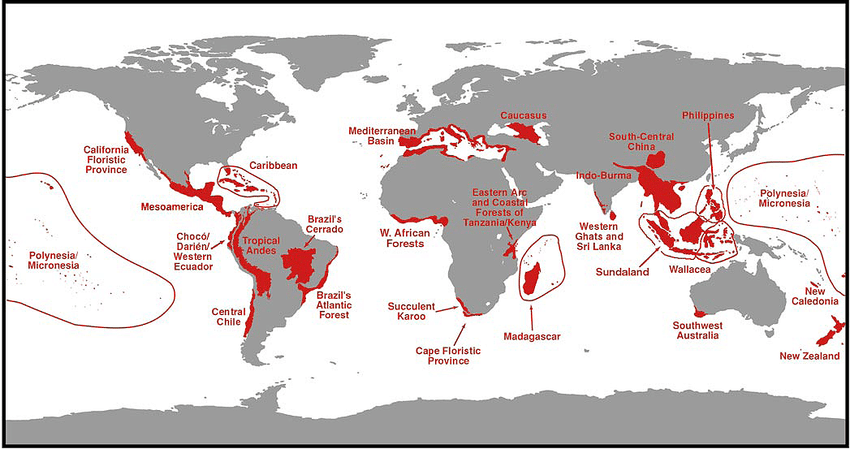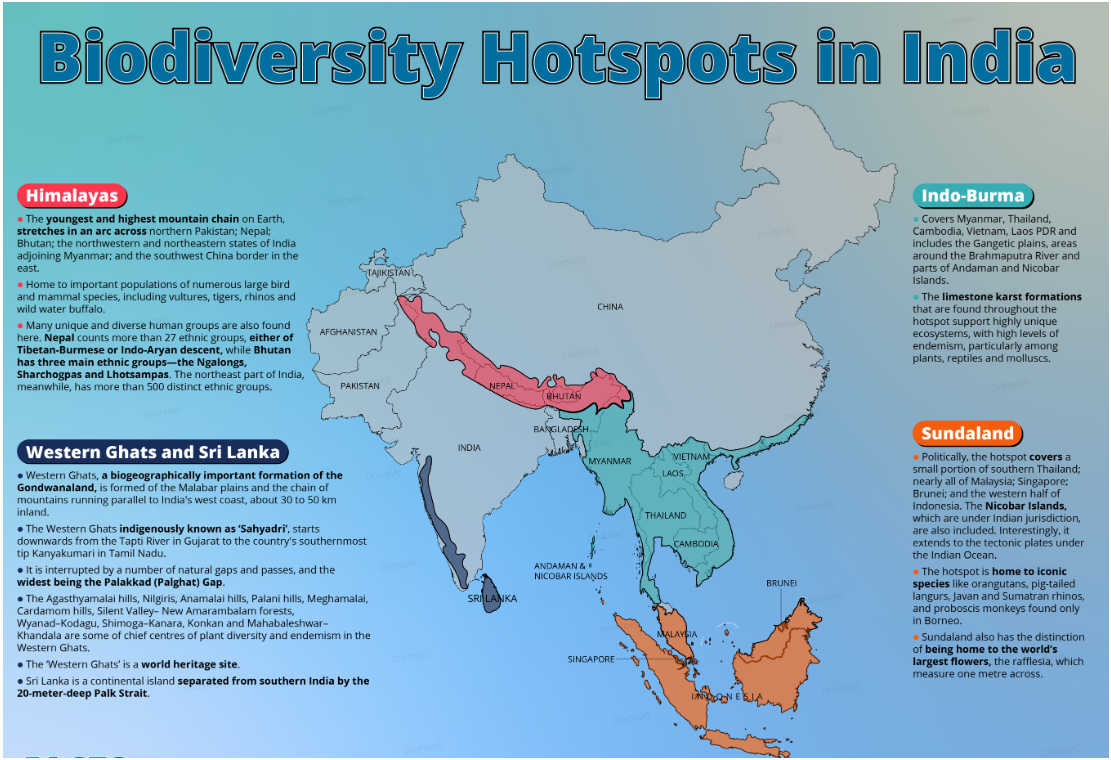12-Jun-2025
Biodiversity Hotspot
What is a Biodiversity Hotspot?
A Biodiversity Hotspot refers to a region that is both rich in biodiversity and at significant risk of destruction. These areas are essential for conservation because they are home to a large number of species found only in that specific region, making them critical for preserving global biodiversity.
Evolution of the Concept of Biodiversity Hotspots
- 1988: The concept of biodiversity hotspots was first proposed by Norman Myers.
- 1989: Conservation International (CI) adopted this concept as its guiding principle.
- 1999: CI conducted a global evaluation to define specific criteria for identifying biodiversity hotspots.
Criteria for a Biodiversity Hotspot
For a region to be recognized as a biodiversity hotspot, it must meet two strict conditions:
- Endemism: The region must have at least 1,500 plant species that are found nowhere else on Earth. This indicates a high level of uniqueness.
- Threat Level: The region must have lost at least 70% of its original natural vegetation. This means only 30% or less of its original habitat remains intact.
Biodiversity Hotspots in the World
- Global Distribution: There are 36 biodiversity hotspots worldwide.
- Location: Most of these hotspots are found in tropical forests.
- Land Area: They cover only 2.3% of Earth’s land surface but are home to about 50% of the world's endemic plant species and 43% of all terrestrial vertebrates.
Map of the Biodiversity Hotspots in the World
Biodiversity Hotspots in India
India has 4 biodiversity hotspots
- Eastern Himalayas: Encompasses parts of Nepal, Bhutan, and northeastern India. It hosts species like the red panda and snow leopard.
- Western Ghats & Sri Lanka: Located along the western coast, this region is known for its rich flora and fauna, including the Nilgiri Tahr and Lion-tailed Macaque.
- Indo-Burma: This hotspot spans northeast India, Myanmar, and parts of Southeast Asia. It is rich in species like amphibians, birds, and reptiles.
- Sundaland: Includes the Nicobar Islands and is recognized for its marine biodiversity and unique terrestrial species.
Preparing Through MCQ
Q. Which of the following conditions must a region meet to be recognized as a biodiversity hotspot?
(1) The region must have at least 1,000 endemic plant species and have lost 50% of its original natural vegetation.
(2) The region must have at least 500 endemic plant species and have lost 80% of its natural vegetation.
(3) The region must have at least 2,000 endemic species of animals and have lost 60% of its natural vegetation.
(4) The region must have at least 1,500 endemic plant species and have lost 70% of its original natural vegetation.
Answer: (4) The region must have at least 1,500 endemic plant species and have lost 70% of its original natural vegetation.


